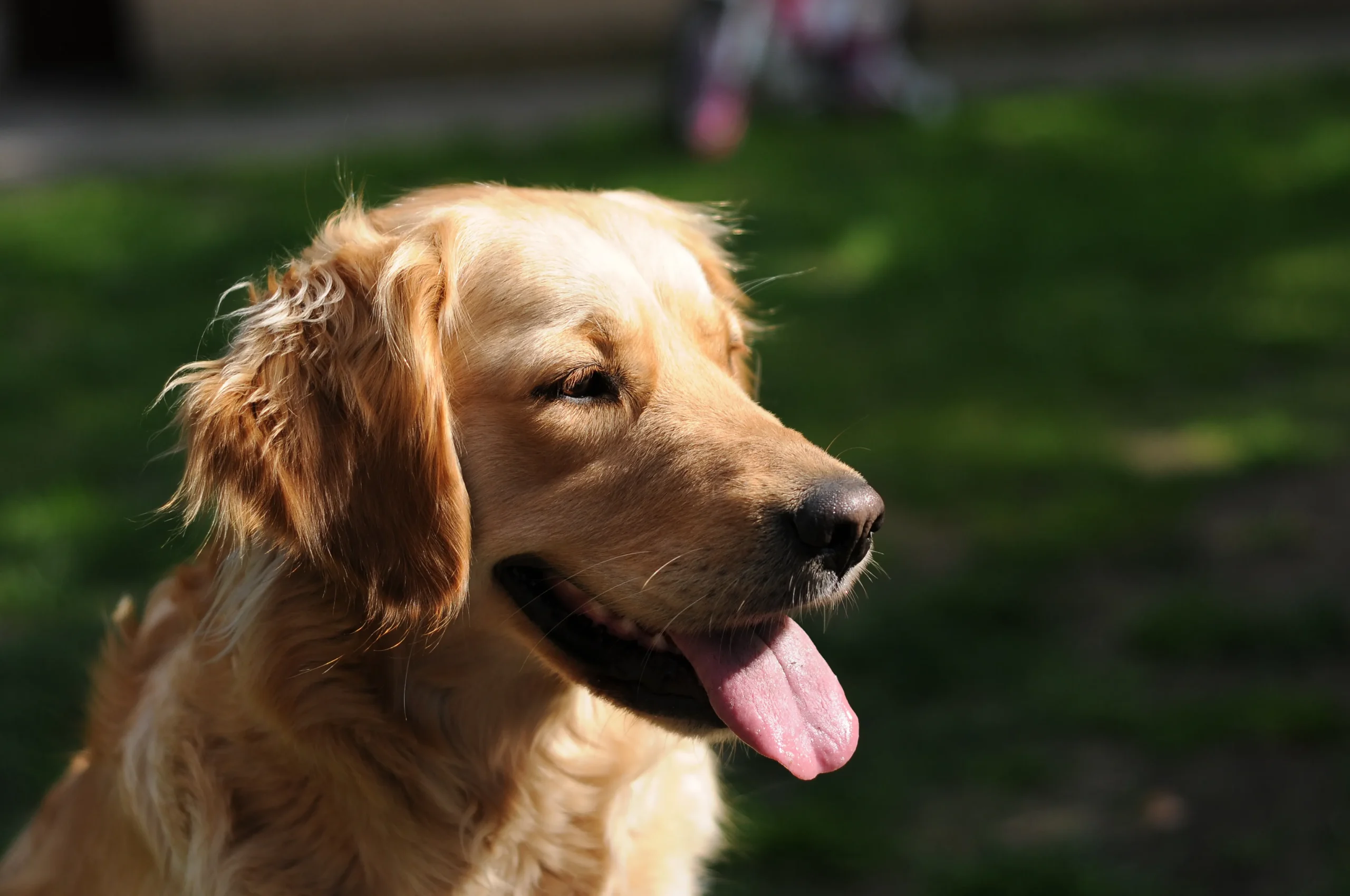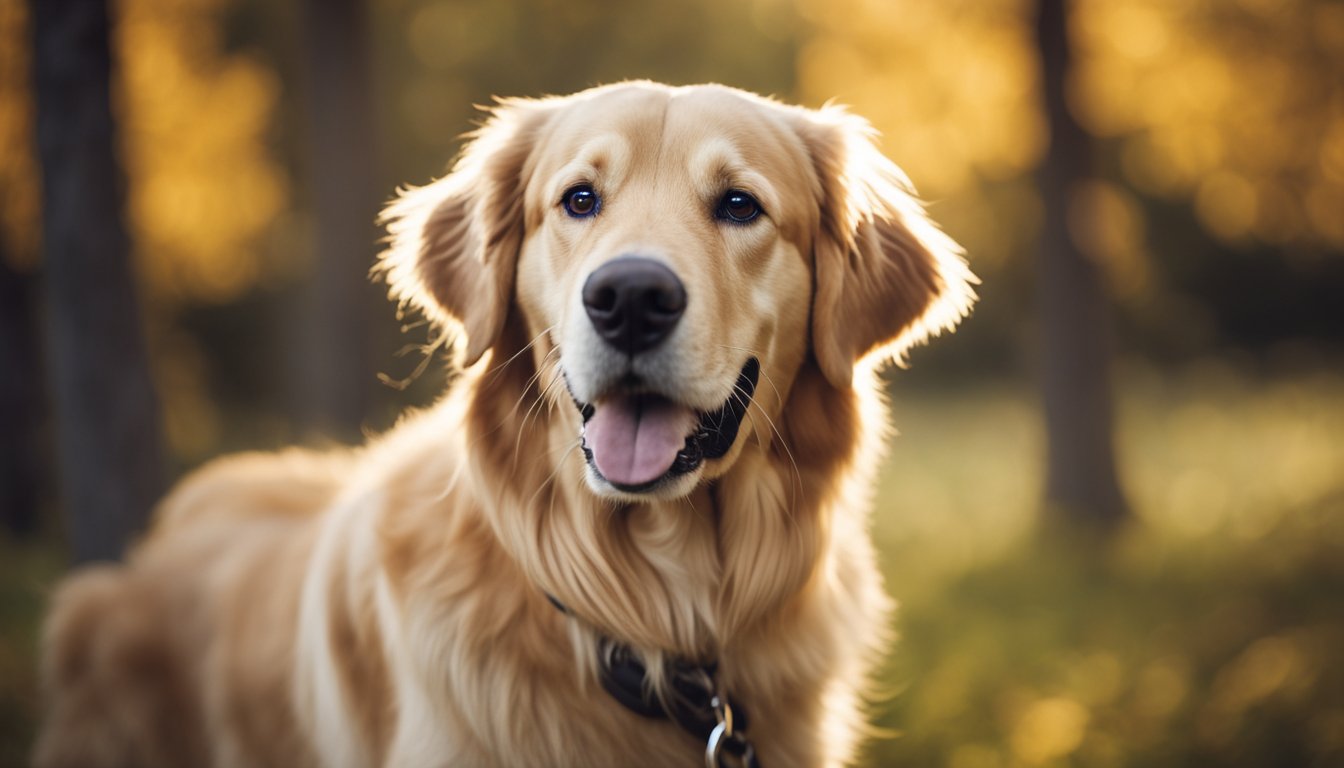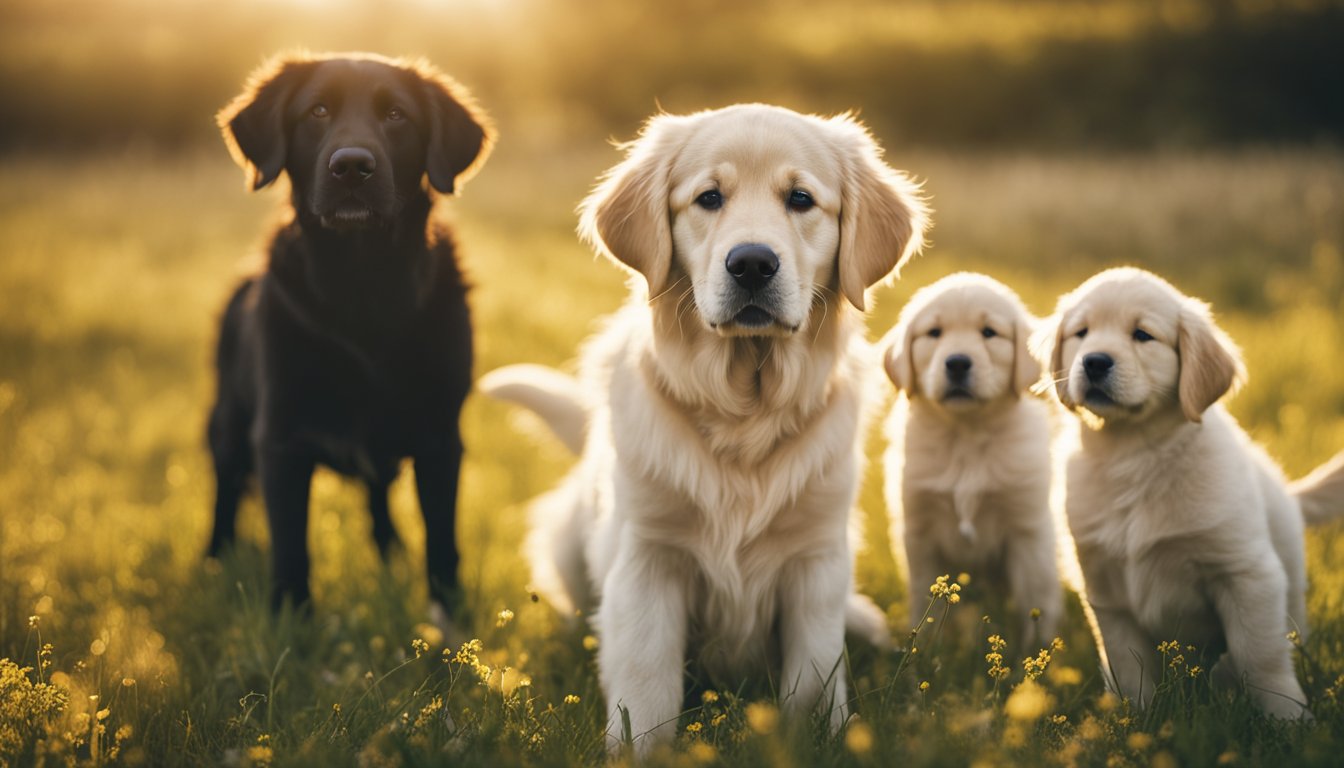Breeding a Golden Retriever is a significant responsibility that requires careful consideration. It is crucial to understand the right age to breed your Golden Retriever to ensure the health of the mother and her puppies. Breeding too early or too late can lead to several health complications for the mother and her offspring. In this article, you will learn about the best age to breed a Golden Retriever and the essential considerations to keep in mind before, during, and after the breeding process.
Golden Retrievers are a popular breed known for their friendly nature and intelligence. They are also known for their excellent temperament and make great family pets. If you are considering breeding your Golden Retriever, it is essential to understand the breeding age and the factors that can affect the mother’s health and the puppies’ well-being. Breeding too early can lead to health complications for the mother and her puppies, while breeding too late can result in fertility issues and other health problems. Therefore, it is crucial to understand the right age to breed your Golden Retriever to ensure a successful and healthy breeding process.
Key Takeaways
- Breeding a Golden Retriever requires careful consideration and understanding of the right breeding age.
- Breeding too early or too late can lead to several health complications for the mother and her offspring.
- Understanding the breeding age, health considerations, and the breeding process’s responsibilities is crucial for responsible breeding.
Understanding the Breeding Age
https://www.youtube.com/watch?v=N-0qdsrisWk&embed=true
Breeding your Golden Retriever is a significant decision that requires careful planning and consideration. It is important to understand the breeding age of your dog to ensure their safety and the health of their offspring.
Female Golden Retrievers
Female Golden Retrievers reach sexual maturity at around six months of age, but it is more common for them to go into heat when they are older. Most experts advise waiting until your female Retriever is at least two years old before breeding, as breeding them too early can lead to health complications.
The first heat cycle of a female Golden Retriever usually occurs between six and twelve months of age. However, it is important to note that the timing of the first heat cycle can vary depending on the individual dog. During the heat cycle, the female dog’s body prepares for mating, and she may become more affectionate and receptive to male dogs.
Male Golden Retrievers
Male Golden Retrievers can reproduce after six months of age and gain full sexual maturity at 12 to 15 months. Unlike females, males do not follow hormonal cycles and can mate at any point in time. If the male maintains his health, he may stay fertile and sexually active into old age.
It is important to note that breeding your Golden Retriever too early can lead to health complications for both the mother and the puppies. It is recommended that you wait until your dog is fully mature sexually and physically before breeding.
In summary, understanding the breeding age of your Golden Retriever is crucial to ensure their safety and the health of their offspring. Female Retrievers should be at least two years old before breeding, while males can reproduce after six months of age. Breeding your dog too early can lead to health complications, so it is important to wait until your dog is fully mature before breeding.
Health Considerations for Breeding
https://www.youtube.com/watch?v=uctbnvTe72M&embed=true
Breeding a Golden Retriever is a significant responsibility that requires thorough knowledge and preparation. Before breeding your Golden Retriever, it is essential to consider the health implications of breeding. Breeding can cause various health problems and complications for both the mother and the puppies.
One of the most common health issues in Golden Retrievers is hip dysplasia. Hip dysplasia is a hereditary condition that affects the hip joints. It can cause arthritis and pain in the joints, which can be debilitating for the dog. Before breeding, it is essential to have your Golden Retriever screened for hip dysplasia to ensure that the puppies do not inherit the condition.
Another health condition to consider is cancer. Golden Retrievers are prone to cancer, and breeding can increase the risk of cancer in both the mother and the puppies. Aortic stenosis and dilated cardiomyopathy are other health issues that can be passed on to the puppies. These are heart conditions that can cause significant health problems for the dog.
Breeding can also affect the immune system of the mother. It can weaken the immune system, making the dog more susceptible to infections and other health problems. It is essential to ensure that the mother is in good health before breeding to avoid any health complications during pregnancy and birth.
Consulting a veterinarian is crucial before breeding your Golden Retriever. Your vet can advise you on the best time to breed your dog and can perform pre-breeding health checks to ensure that the dog is in good health. Your vet can also advise you on the necessary vaccinations and treatments that the mother and puppies will need.
In summary, breeding a Golden Retriever comes with significant health considerations. It is essential to consider the health implications of breeding before deciding to breed your dog. Screening for hip dysplasia and other health conditions, consulting a vet, and ensuring that the mother is in good health are crucial steps to take before breeding your Golden Retriever.
Breeding Process and Pregnancy
« Golden Cocker Retriever Mix: The Friendly and Loyal Companion You Need
Best Bones for Golden Retrievers: A Guide to Keeping Your Pup Happy and Healthy »
https://www.youtube.com/watch?v=gJEeRwBgT_Q&embed=true

Once you have successfully mated your male and female Golden Retrievers, it’s important to understand the breeding process and pregnancy.
During the mating process, your female Golden Retriever may experience a clear discharge, which is normal. You should also keep an eye on her weight, as pregnant dogs tend to gain weight rapidly. It’s important to keep her on a healthy diet to ensure the health of both the mother and the puppies.
After mating, it’s important to confirm that your female Golden Retriever is fertile. This can be done by a veterinarian through a blood test or by monitoring her heat cycle. If she is fertile, she will become pregnant within a few days of mating.
Once your female Golden Retriever is pregnant, it’s important to provide her with proper care and nutrition. She should be given a high-quality dog food that is rich in nutrients and protein. It’s also important to monitor her closely and take her to regular check-ups with a veterinarian to ensure the health of both the mother and the puppies.
As your female Golden Retriever approaches her due date, you should prepare for the whelping process. This includes creating a comfortable and safe area for her to give birth, as well as having the necessary supplies on hand. It’s also important to monitor her closely during labor and delivery to ensure that everything goes smoothly.
After the puppies are born, it’s important to provide them with proper care and nutrition as they grow and develop. This includes weaning them from their mother’s milk and providing them with a high-quality puppy food.
Remember, breeding Golden Retrievers should only be done responsibly and with the health and well-being of the dogs in mind.
The Role of Responsible Breeding
https://www.youtube.com/watch?v=XgcHWux4QDo&embed=true
If you’re considering breeding your Golden Retriever, it’s important to understand the role of responsible breeding in maintaining the well-being of the breed. Responsible breeders prioritize the health and temperament of their dogs over profit and are committed to producing healthy, happy puppies that will become beloved pets.
The American Kennel Club (AKC) provides guidelines for responsible dog breeding that include health testing, socialization, and responsible placement of puppies. By following these guidelines, reputable breeders can help ensure that their puppies are healthy and well-adjusted.
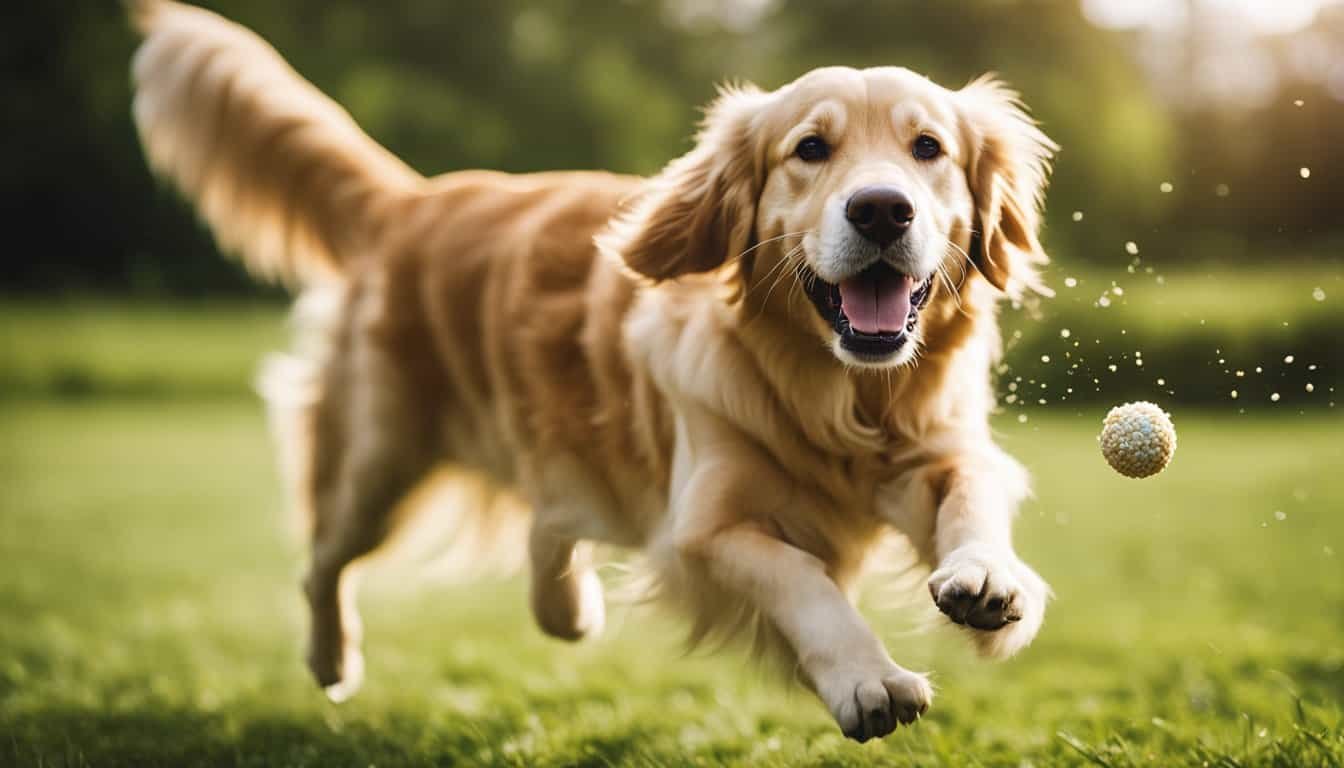
One of the key responsibilities of a responsible breeder is to maintain the lineage of their dogs. This means keeping detailed records of each dog’s health history and breeding history, as well as the health and temperament of their offspring. By carefully selecting breeding pairs based on health, temperament, and genetic diversity, responsible breeders can help maintain the health and vitality of the breed.
Another important responsibility of a responsible breeder is to prioritize the well-being of their dogs. This includes providing proper nutrition, exercise, and veterinary care, as well as socialization and training. By ensuring that their dogs are healthy and well-adjusted, responsible breeders can help produce puppies that are happy and well-behaved.
In summary, responsible breeding is a crucial part of maintaining the health and well-being of the Golden Retriever breed. By following AKC guidelines and prioritizing the health and temperament of their dogs, reputable breeders can help ensure that their puppies become beloved pets and valued members of their new families.
Post-Breeding Care and Considerations
After breeding your Golden Retriever, you need to take extra care of your female dog. Here are some post-breeding care and considerations that you should keep in mind:

Diet and Nutrition
Your female dog will need a well-balanced diet and proper nutrition after breeding. You should provide her with high-quality dog food that is rich in protein and other essential nutrients. You can also add supplements to her diet to ensure that she gets all the necessary vitamins and minerals.
Exercise
Your female dog will need to rest and recover after breeding. However, it is also important to keep her active and provide her with regular exercise to maintain her physical and mental health. You can take her for short walks or engage her in other low-impact activities.
Grooming and Coat Care
Your female dog’s coat may become thicker and more luxurious during pregnancy. After breeding, you should continue to groom her regularly to keep her coat healthy and shiny. You can also consult with a professional groomer for additional coat care tips.
Birth and Puppies
If your female dog is pregnant, you should prepare for the birth of the puppies. Make sure that you have a clean and comfortable space for the puppies to be born and provide them with proper care and nutrition after birth. You can also consult with a veterinarian for additional advice on caring for newborn puppies.
Homes and Temperament
Golden Retrievers are friendly, intelligent, and easy to train dogs. They are also known for their friendly and outgoing temperament. If you plan on keeping the puppies, make sure that you provide them with a loving and nurturing home. You can also consult with a professional dog trainer for additional advice on training and socializing your puppies.

Anxiousness
Your female dog may experience anxiety or stress after breeding. You can help her cope with these feelings by providing her with a calm and stable environment. You can also consult with a veterinarian for additional advice on managing anxiety and stress in dogs.
Overall, breeding your Golden Retriever can be a rewarding experience. By following these post-breeding care and considerations, you can ensure that your female dog and her puppies are healthy and happy.
Frequently Asked Questions
What is the ideal age to breed a Golden Retriever?
The ideal age for breeding a female Golden Retriever is between 2 and 3 years old. At this age, the dog is fully matured and has reached her optimum health. It is important to wait until the dog is fully grown to reduce the risk of complications during pregnancy and delivery.
How many times can a Golden Retriever be bred?
A female Golden Retriever can be bred up to 3 times in her lifetime. Breeding a dog too many times can lead to health problems such as uterine infections and complications during pregnancy and delivery. It is important to give the dog a break between breeding cycles to allow her body to recover.
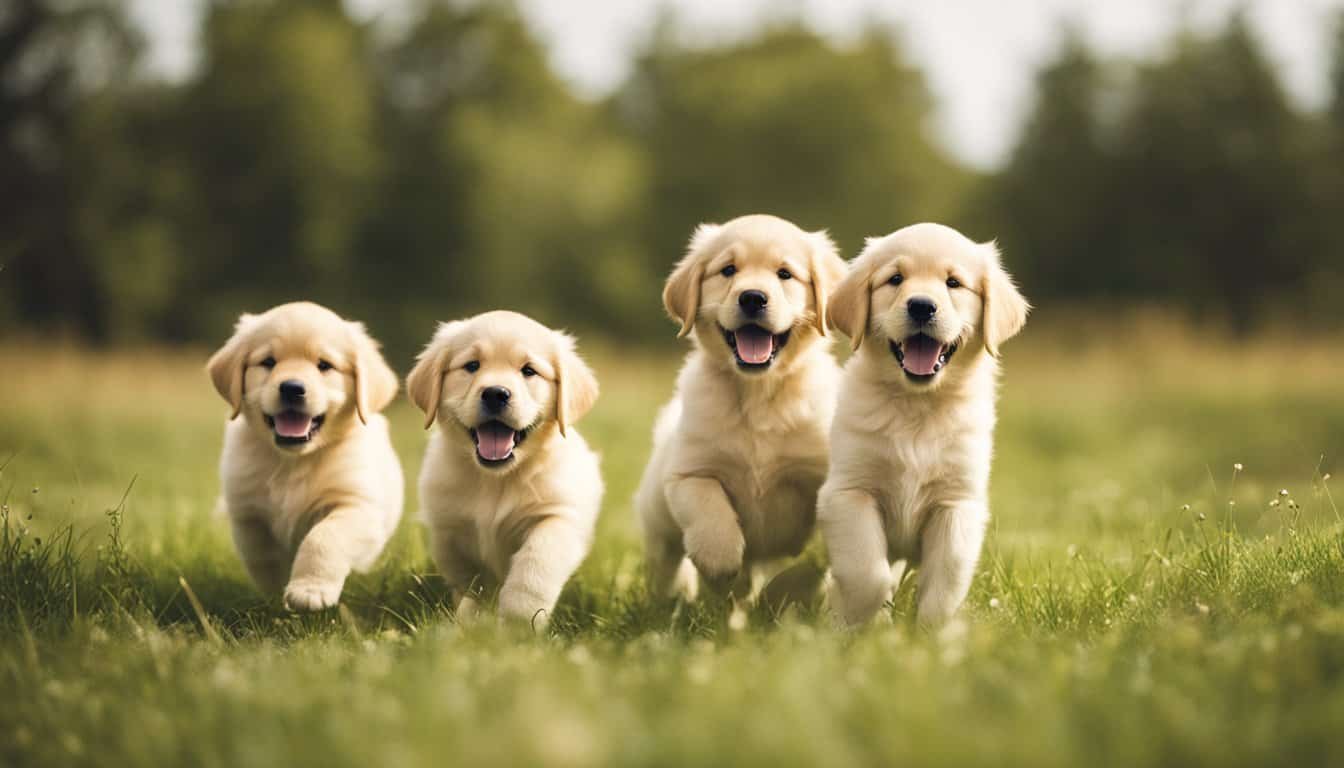
What is the pregnancy duration for Golden Retrievers?
The pregnancy duration for Golden Retrievers is around 63 days. It is important to keep track of the pregnancy and monitor the dog’s health during this time. Regular vet check-ups are recommended to ensure that the dog and puppies are healthy.
What is the recommended age for breeding a male Golden Retriever?
A male Golden Retriever can start breeding at around 12 to 15 months of age. It is important to wait until the dog is fully matured before breeding him to ensure that he is healthy and able to produce healthy offspring.
Can a 7-year-old Golden Retriever give birth?
While it is possible for a 7-year-old Golden Retriever to give birth, it is not recommended. Older dogs are at a higher risk of health complications during pregnancy and delivery. It is important to consult with a veterinarian before breeding an older dog.
What is the average litter size for a first-time Golden Retriever mother?
The average litter size for a first-time Golden Retriever mother is around 6 puppies. However, litter size can vary depending on the dog’s age, health, and genetics. It is important to be prepared for the possibility of a larger or smaller litter and to provide appropriate care for the puppies after birth.


